- Can be prefabricated
- Made of transparent panels + frame
- Can be used as the base module of a mega structure
- can be adapted to different scales
- Can grow exotic plants and fruits consistently throughout the year
- How to optimize it to make it even more efficient?
Optimization strategy
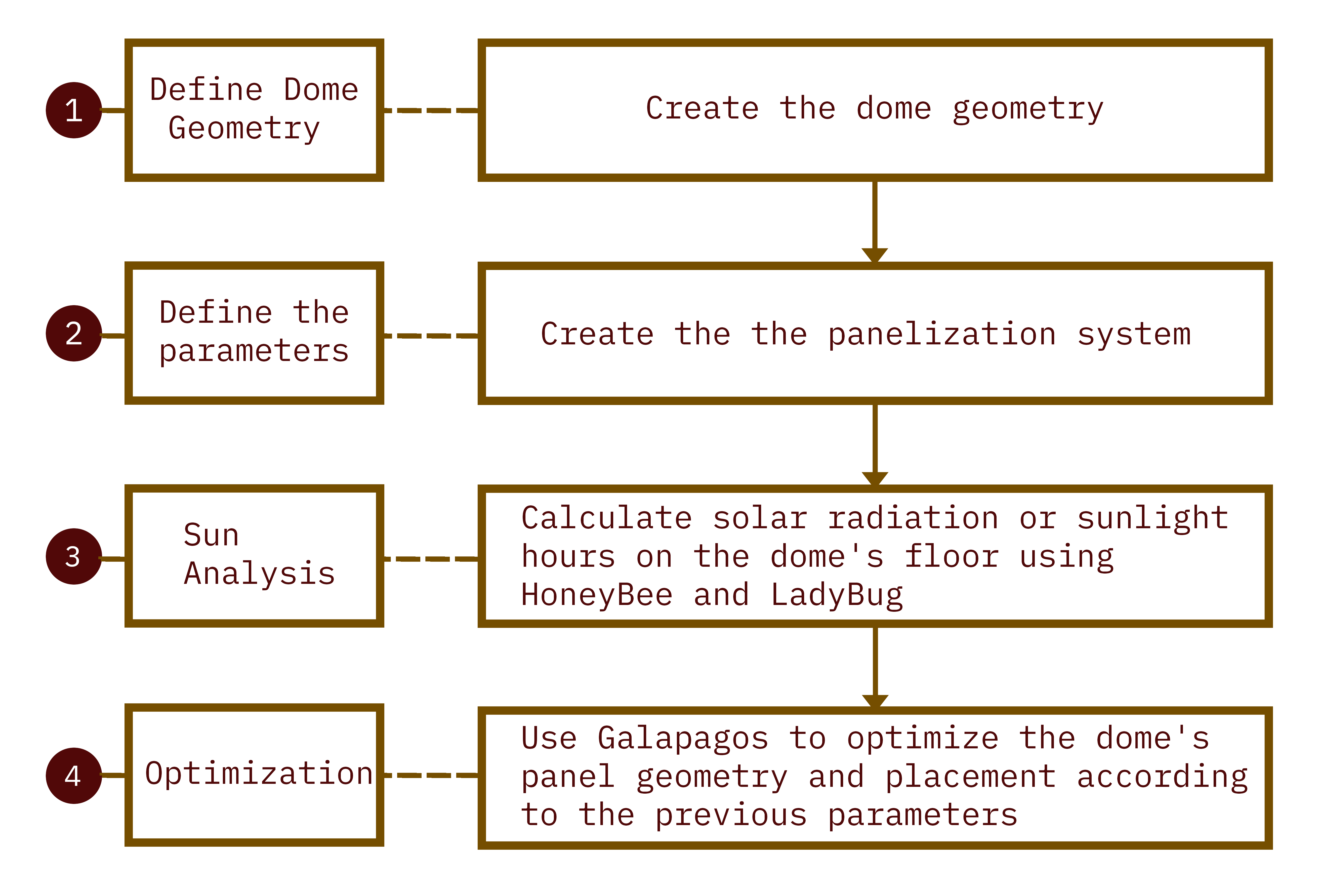
- Adapt the Voronoi dome of the previous exercise to be an efficient and functioning greenhouse = play with transparency and opacity of the materials.
- Create a intramuros greenhouse structure that is efficient even in urban landscapes
- Use the ‘living cell behavior’ to create panels that are modular and adaptable:
- Use smart glass or switchable glass for the panels.
These adaptable panels will stay transparent as long as the heat is beneficial for the plant, but will turn opaque when the heat is too strong and could harm the plant.
Adaptation design objectives
- Adaptation strategy from voronoi dome to actual greenhouse structure:
- The cell = the moving ‘living’ panel that mimics the organic behaviour of survival acclimatation to the surrounding environment (too hot/too cold).
- the membrane = the frame structure to hold said panels.
Pseudo-code:
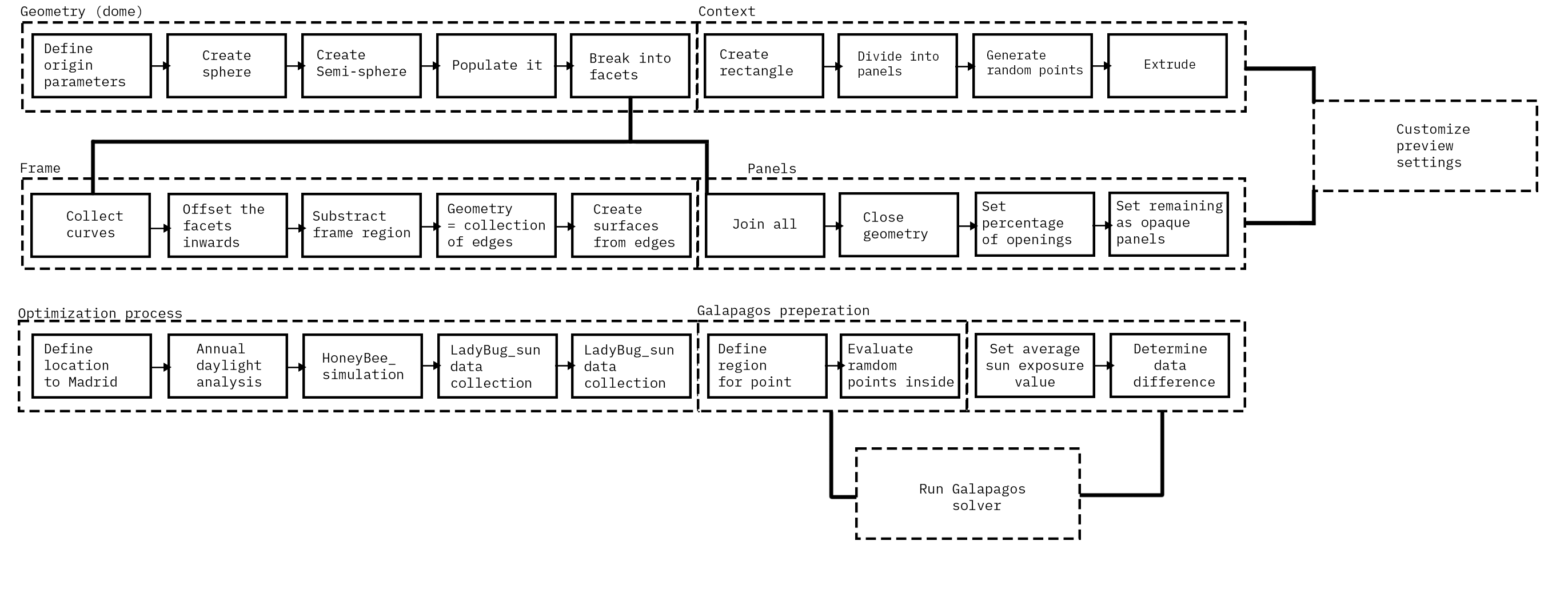
Optimization GIF

Worst fitness
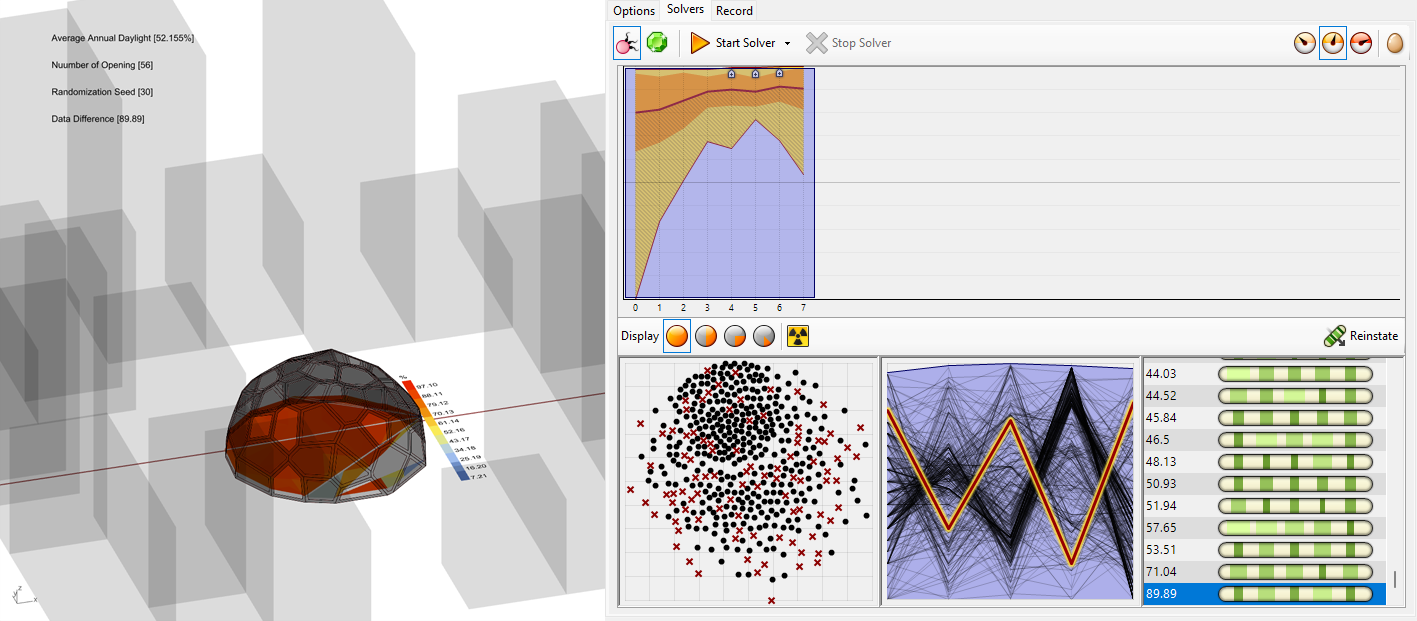
- The worst coordinates/combination of seeds and openings paired with sunlight resulting in too big of a difference inside the dome = uneven distribution for the plants inside (too much sun exposure for some and too little for others)
- Plants inside = endangered
Best fitness
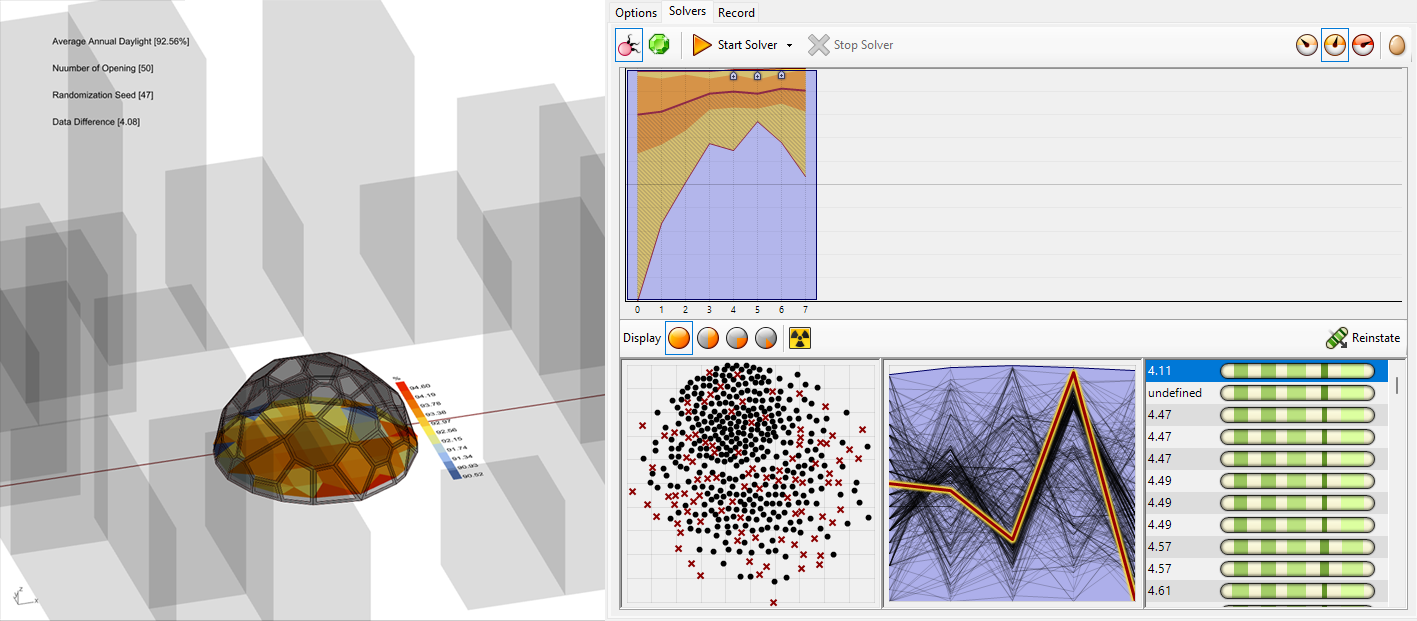
- The best coordinates/combination of seeds and openings paired with sunlight analysis resulting in minimal difference in sun exposure throughout the dome = even distribution for the plants inside (same even sun exposure for ALL plants)
- Plants inside = safe
LadyBug sun analysis
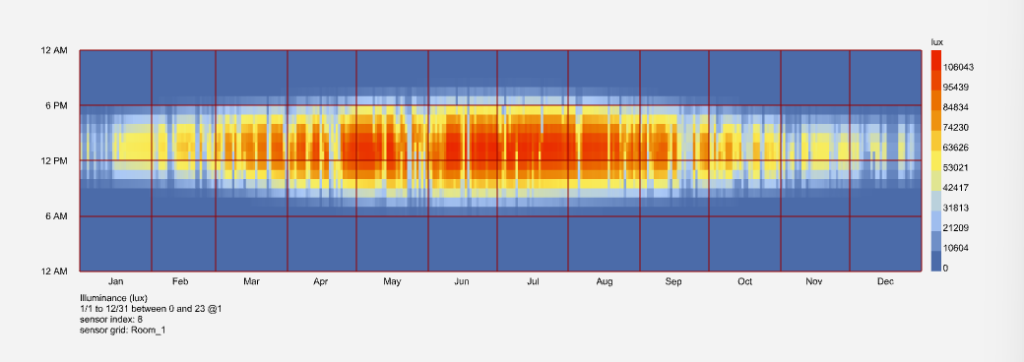
- Sun exposure analysis of the greenhouse dome throughout the year.
- Consistent sun exposure through time, even in a majority urban setting.
- Least exposure during January and February, as well as October through December.
Iterations Catalog
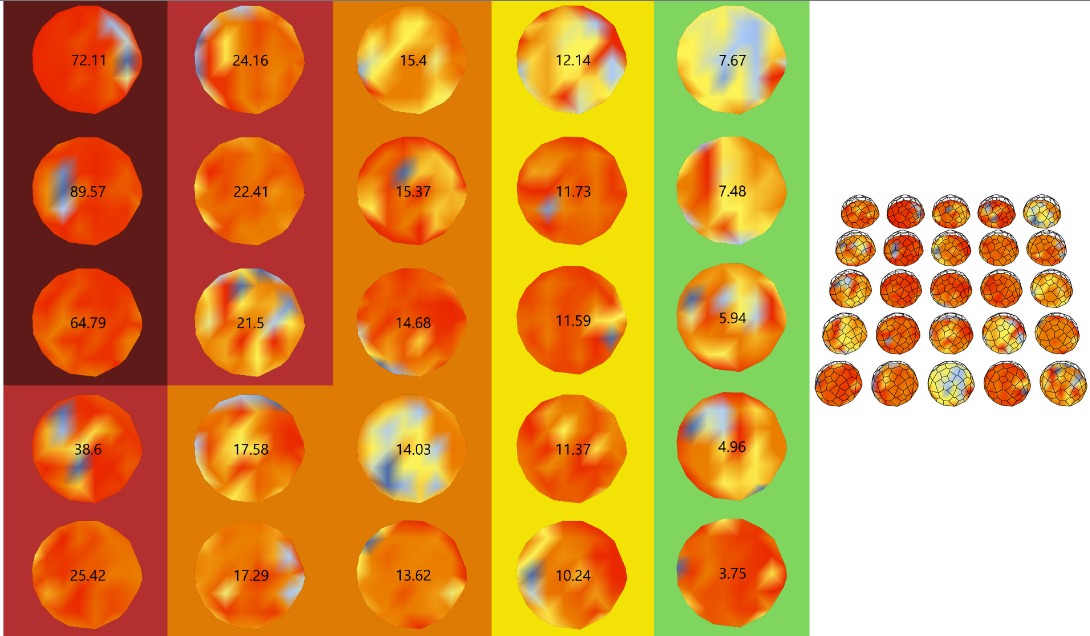
Iterations from worst (most uneven sunlight/heat distribution inside the dome) to best fitness (most even distribution) depending on position, number of openings and number of seeds.
Other explorations…Spatial optimization
- Metaball exploration using Cocoon:
Playing with clusters of the greenhouse dome to create modular megastructures for urban agriculture adapted for different scales.

